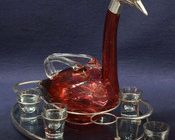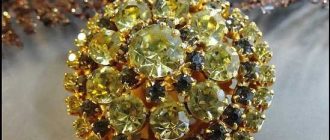The Austrians are known to possess immense creative talent. Find out about the evolution of Austrian decorative styles with the changing times.
The Austrians are known to possess a unique sense of aesthetics. Lauded by some and disliked by others the fact of the matter is that the Austrians have managed to capitalize on their creative energy by producing many decorative items. From Austrian blinds to crystal jewelry to amazing interiors and fascinating building structures the Austrians have made a loud display of their creative skills.
The Austrians have a long history rich and flourishing with art. Many great artists have risen from this country throughout the ages. From musicians to architects and composers to designers Austria has exercised its creative muscles in many different domains of art. The Austrian sense of aesthetics has evolved with the changing times.
Decorative styles through the changing times
It was the Renaissance period that brought about the awakening in Austrian arts. Most significantly impacted were the decorative styles of jewelry. Since trade and cross cultural activity had increased by the seventeenth century it provided the jewelers with a wide variety of new gemstones and the decorative styles of various other cultures.
Prior to this period much of Austrian jewelry was confined to molding interesting forms out of precious metals like gold and silver. The renaissance period saw a transition towards the incorporation of gemstones into jewelry and now most of the creative muscle was being exercised on the setting of these gemstones.
The jewelry collections of those times give a clear picture of what the fashion was like. The most commonly used gemstones during that time were Colombian emeralds, spinal, topaz amazonite from Brazil, rubies from India, Chrysoberyl from Sri Lanka, Afghani Lapis lazuli, red sea peridot, Hungarian opal, garnet, amethyst and the Persian turquoise.
The 18th century saw a comeback to the grandeur decorative style in jewelry, dressing and living. This was significantly impacted by the rise of Napoleon Bonaparte in France. The dressing of the people of those times was extra ordinary. They sought to wear clothes that would be specially tailored according to their jewelry. These times saw a rise in the use of diamonds in the form of earrings, rings, brooches, and necklaces.
The age of Romanticism followed with its own distinct decorative style. It was the treasures that were being unearthed by archeological expeditions going on in different regions that served as an inspiration for the arts and crafts of those times. The industrial revolution gave birth to the middle class that now demanded jewelry and other fashion accessories for it self.
This led to a new trend quite unseen before. Jewelry was now being made through cheap industrial processes being made with cheap alloys and substitute gemstones. On the one hand you had the cheap jewelry for the middle class and on the other the wealthy made all possible efforts to stand out from the middle class.
Art nouveau brooches
A decade before the 1900’s began the Art Nouveau style popularized. The main focus of this type of art was on the form of the female as well as great emphasis on the use of color. The use of motifs like swans, snakes, peacocks, dragonflies and mythical characters was a common feature of the time.
The era that followed was the Art Deco movement which sought to remove all barriers between artists and craftsmen. This led to some interesting developments. Modern Austrian decorative style is a mixture of all these styles and a touch of contemporary fashion.





